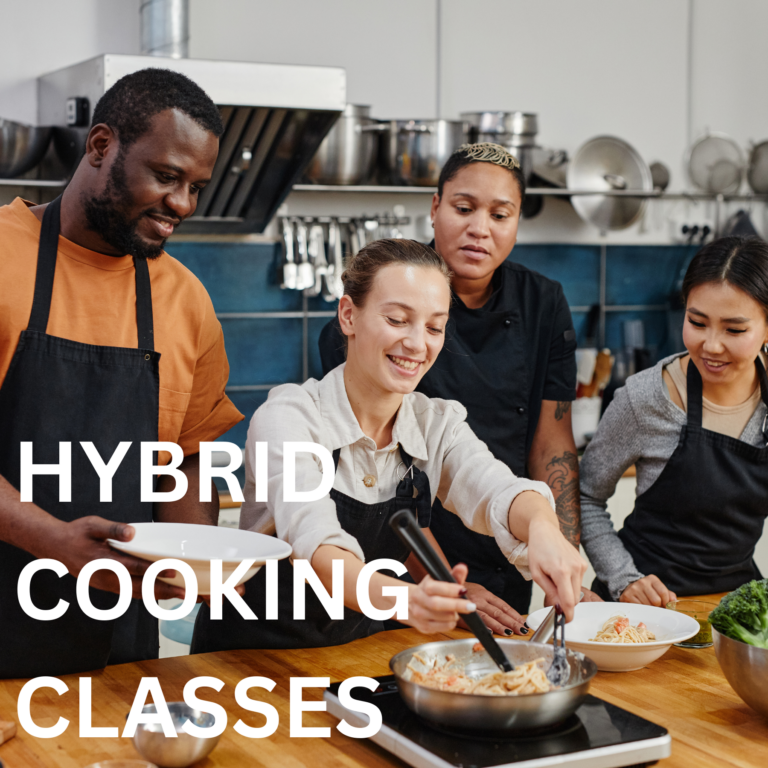The culinary industry is evolving, and hybrid cooking classes have emerged as a game-changing business opportunity. By combining in-person workshops with live-streamed digital sessions, entrepreneurs can reach a wider audience and provide a flexible, immersive cooking experience. Whether targeting home cooks, food enthusiasts, or aspiring chefs, hybrid cooking classes cater to various learning styles and schedules.
In this article, we explore how to launch a profitable hybrid cooking class business, what services to offer, pricing strategies, revenue potential, and effective marketing tactics to attract participants.
Why Hybrid Cooking Classes Are a Lucrative Business Opportunity
Hybrid cooking classes offer numerous benefits for both businesses and customers:
- Increased Accessibility: Participants can join classes from anywhere, eliminating geographical barriers.
- Higher Revenue Potential: Multiple streams of income from in-person and virtual attendees.
- Scalability: Digital classes allow unlimited participation without extra venue costs.
- Enhanced Learning Experience: Students can interact live, follow recorded sessions, and revisit materials.
- Lower Operational Costs: Hosting a mix of physical and online classes reduces infrastructure expenses.
Key Components of a Successful Hybrid Cooking Class
1. Professional Setup for Both In-Person and Online Sessions
To deliver high-quality classes, invest in:
- Well-equipped kitchen space for live demonstrations.
- Professional-grade cameras and microphones for streaming.
- Multiple camera angles for better online viewing.
- Reliable internet connection to ensure seamless streaming.
- Lighting and soundproofing for clear audio and video.
2. Engaging Course Structure
Designing a structured course ensures a great learning experience:
- Introductory session explaining techniques and ingredients.
- Step-by-step guided cooking demonstrations.
- Live Q&A sessions to answer participant queries.
- Post-class support with downloadable recipes and recorded sessions.
- Interactive assignments such as personalized dish presentations.
3. Diverse Class Offerings
Offer various classes to attract different audiences:
- Beginner Cooking Classes for home cooks.
- Specialty Cuisine Workshops (Italian, Japanese, Vegan, etc.).
- Baking and Pastry Classes for dessert lovers.
- Healthy Meal Prep Courses for fitness-conscious individuals.
- Professional Chef Training for career advancement.
- Kids & Family Cooking Sessions for bonding experiences.
Monetization Strategies
1. Flexible Pricing Models
To maximize revenue, offer multiple pricing tiers:
| Package | Price Range | Features |
|---|---|---|
| Basic Online Access | $25 – $50 | Live streaming only, recipe downloads. |
| Standard Virtual Class | $50 – $100 | Live + recorded sessions, ingredient lists, Q&A. |
| Premium Hybrid Class | $100 – $200 | In-person + digital access, mentorship, additional resources. |
| Subscription Model | $20 – $50/month | Unlimited access to all online courses. |
2. Sponsorships and Partnerships
Collaborate with food brands, kitchen appliance companies, and grocery stores for sponsorship deals.
3. Affiliate Marketing
Earn commissions by recommending kitchen tools, cooking ingredients, or e-books through affiliate programs.
4. Corporate and Private Events
Offer customized classes for corporate team-building, private parties, and cooking retreats.
5. Merchandise and Cookbooks
Sell branded kitchenware, customized aprons, and exclusive recipe books.
Marketing Strategies to Attract Participants
1. Website & SEO Optimization
- Create an SEO-friendly website with clear pricing, class schedules, and a booking system.
- Use relevant keywords such as “best online cooking classes,” “live cooking workshops,” “hybrid culinary courses”.
- Publish recipe blogs and cooking tips to drive organic traffic.
2. Social Media Marketing
- Share cooking snippets on Instagram, TikTok, and Facebook.
- Post live Q&A sessions and behind-the-scenes videos.
- Use Facebook groups and LinkedIn to target professional chefs and foodies.
3. YouTube & Video Content
- Upload free tutorials with embedded links to your paid classes.
- Create engaging recipe videos with high production value.
4. Email Marketing & Lead Magnets
- Offer a free e-book or discount in exchange for email signups.
- Send newsletters with cooking tips, upcoming class schedules, and special offers.
5. Influencer Collaborations & Partnerships
- Partner with food bloggers, chefs, and nutritionists for cross-promotions.
- Feature guest chefs in special hybrid classes.
Expected Earnings Potential
The income potential depends on class frequency and pricing. Here’s a possible revenue breakdown:
| Students Per Month | Average Fee Per Class | Monthly Revenue |
| 50 students | $50 | $2,500 |
| 100 students | $75 | $7,500 |
| 200 students | $100 | $20,000 |
With subscriptions, sponsorships, and merchandise, additional income streams can push earnings well beyond $10,000 per month.
Challenges and Solutions
- Tech Setup Difficulties: Ensure professional equipment and test live-streaming before classes.
- Engagement in Virtual Sessions: Encourage interaction through live chat, polls, and breakout rooms.
- Attracting New Students: Offer free trial classes and referral discounts to boost sign-ups.
- Competition with Free YouTube Content: Differentiate with personalized feedback, premium resources, and real-time Q&A.
Conclusion: Why Hybrid Cooking Classes Are the Future
Hybrid cooking classes offer the best of both worlds, combining the intimacy of in-person instruction with the accessibility of digital learning. With the right pricing, marketing, and service quality, this business model presents a scalable, high-profit opportunity in the booming online education market.
For aspiring entrepreneurs, this is the perfect time to launch a hybrid culinary business, leveraging technology to create an engaging, profitable, and globally accessible cooking experience.



